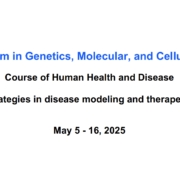Nuova luce sulla SLA: perché l’organismo non è in grado di “riparare” il DNA danneggiato
Una ricerca svolta presso l’Istituto di genetica molecolare “Luigi Luca Cavalli-Sforza” del Consiglio nazionale delle ricerche di Pavia (Cnr-Igm) ha prodotto dei risultati chiave per definire i meccanismi molecolari alla base dell’accumulo di danno al DNA in cellule affette da Sclerosi laterale amiotrofica-SLA, una patologia neurodegenerativa devastante e ancora priva di valide prospettive terapeutiche, in continuo aumento nella popolazione mondiale.
Lo studio, finanziato da Fondazione AriSLA, ha visto il contributo di ricercatori e ricercatrici dell’Istituto di farmacologia traslazionale (Cnr-Ift), dell’Istituto di biologia e patologia molecolari (Cnr-Ibpm), della Sapienza Università di Roma e dell’Università degli studi Tor Vergata di Roma, dell’Istituto Mondino di Pavia e dell’IFOM di Milano.
I risultati, pubblicati sulla rivista scientifica Cell Death & Differentiation, rivelano che gli aggregati delle proteine FUS e TDP-43, che si accumulano nei pazienti SLA, impediscono alle cellule di segnalare e riparare il danno al DNA: questo porta a un rapido accumulo del danno, causando la perdita di funzionalità del genoma e sofferenza cellulare. Mentre, infatti, in persone sane le cellule dell’organismo riescono a riparare prontamente i molteplici danni subiti ogni giorno dal DNA in esse presente attraverso un processo di “risposta” noto come ‘DNA Damage Response’, nei pazienti affetti da SLA tale risposta cellulare non funziona in modo efficace contribuendo alla neurodegenerazione.
Sofia Francia, ricercatrice del Cnr-Igm che ha coordinato lo studio, afferma: “Già in un precedente studio sostenuto da AriSLA avevamo dimostrato che proprio l’aggregazione delle proteine FUS e TDP-43 impedisce alle cellule di segnalare e riparare il danno al DNA. La conseguenza di questa disfunzione è che il DNA danneggiato si accumula velocemente nelle cellule, portando a perdita di funzione del genoma e ad una sofferenza della cellula stessa. Oggi, l’aver identificato gli attori maggiormente coinvolti da questo difetto ci ha permesso di testare a livello cellulare una terapia con un farmaco già approvato per le sue azioni antibatteriche e che recentemente ha dimostrato avere anche azioni antitumorali. I risultati ottenuti sono estremamente promettenti, in quanto rappresentano un primo passo che ci consentirà di proseguire gli studi su modelli più avanzati e, auspicabilmente, arrivare a potenziali nuove terapie”.
Lo studio, infatti, propone di reindirizzare una molecola già approvata per il trattamento di questa malattia, con un potenziale rapido riscontro per i pazienti.
“Esprimiamo soddisfazione per questi risultati che derivano da più studi supportati da AriSLA e che ci confermano l’importanza di dare continuità alla ricerca più valida e valutata meritevole dal nostro rigoroso processo di selezione”, aggiunge Anna Ambrosini, Responsabile Scientifico di AriSLA.
La SLA rappresenta una delle sfide più difficili per gli studiosi delle malattie neurodegenerative: le diagnosi sono in crescita esponenziale nel primo mondo per motivi ancora sconosciuti, e l’assenza di terapie risulta in un peso considerevole sul sistema sanitario nazionale. Nel 2040, si prevede che il numero di persone diagnosticate con SLA in Europa aumenterà, con una crescita prevista del 20% rispetto al numero attuale di 28.000 casi, raggiungendo i 35.000 casi. Tale aumento è in parte dovuto alla mancanza di trattamenti efficaci che rendono la SLA una sfida crescente per la sanità pubblica.
JOINT IGM-UNIPV-IFOM Imaging Workshop
-
Dario Parazzoli –IFOM (MI), Two-Photon Imaging in Cancer Research: A Window into the Tumor Microenvironment
-
Amanda Oldani – CGS, UniPV, Total Internal Reflection Fluorescence Microscopy, a closer look to the great unknown
-
Spartaco Santi – IGM (BO), From Idea to Illumination: Gustafsson’s SIM Revolution Under the Lens
-
Simone Sabbioneda– IGM (PV), Fluorescence under Pressure: Flow and Imaging cytometry
13th Arturo Falaschi Lecture – 10 giugno 2025
13th “Arturo Falaschi Lecture”
10 giugno 2025
ore 10:30
Prof. John Diffley
Associate Research Director
Francis Crick Institute
London, UK
Understanding the Evolution of DNA Replication Initiation through Biochemistry
Seminario del dott. Davide Pradella all’IGM
È in programma per il 28 maggio 2025 il seminario “Engineering focal oncogene amplifications, insights into the contributions of extrachromosomal DNA (ecDNA) to tumorigenesis”, che sarà tenuto dal Dott. Davide Pradella.
L’appuntamento avrà luogo alle ore 14:30, presso l’Aula Falaschi – IGM-CNR.
Course of Human Health and Disease
Dal 5 al 16 maggio 2025, presso l’Istituto di Genetica Molecolare “Luigi Luca Cavalli-Sforza”, si terrà il corso “Pioneering strategies in disease modeling and therapeutic discovery”, nell’ambito del PhD Program in Genetics, Molecular, and Cellular Biology.
In allegato la locandina.
Corso avanzato dal 31 marzo all’11 aprile
Dal 31 marzo all’11 aprile 2025, presso l’Istituto di Genetica Molecolare “Luigi Luca Cavalli-Sforza”, si terrà il corso avanzato “Mechanisms and Pathways Controlling Nuclear and Genome Integrity”, parte del PhD Program in Genetics, Molecular, and Cellular Biology.
In allegato la locandina.
È mancato Giovanni Maga
È scomparso nel tardo pomeriggio di sabato 22 marzo 2025 il prof. Giovanni Maga, Direttore del Dipartimento di Scienze Biomediche del CNR, già direttore dell’Istituto di Genetica Molecolare “Luigi Luca Cavalli-Sforza”. Aveva 59 anni.
La vita di Giovanni Maga è stata profondamente intrecciata con quella del nostro istituto, presso il quale ha iniziato a lavorare già durante il percorso di laurea, cui sono seguiti il master e la specializzazione. Successivamente al postdoctoral fellow, svolto presso l’Università di Zurigo, Maga ha proseguito la sua carriera presso l’istituto di Pavia; dapprima come assegnista di ricerca, poi come ricercatore, primo ricercatore, dirigente di ricerca e responsabile della Sezione Enzimologia del DNA & Virologia.
Nel 2019 è stato nominato direttore dell’Istituto di Genetica Molecolare.
Ha mantenuto la direzione fino al 2023, quando ha assunto la guida del Dipartimento di Scienze Biomediche del CNR.
Nel corso della sua carriera è stato autore di oltre 200 articoli su riviste internazionali, di libri anche divulgativi e di diversi brevetti.
Giovanni Maga si è occupato di enzimologia della replicazione del DNA sin dalla laurea. La sua ricerca si è concentrata sulla caratterizzazione dei sistemi enzimatici coinvolti nel metabolismo dei nucleotidi e nella duplicazione del materiale genetico nelle cellule umane e nei virus. Il suo interesse ha riguardato la comprensione dei processi molecolari di base sia sull’individuazione di nuovi bersagli enzimatici per la chemioterapia antivirale e antitumorale. Ha studiato i meccanismi biochimici che collegano la replicazione e la riparazione del DNA nelle cellule tumorali, con particolare attenzione alle DNA polimerasi specializzate, e le interazioni molecolari tra ospite e virus per sviluppare farmaci antivirali ad ampio spettro.
Tutti noi dell’Istituto di Genetica Molecolare siamo profondamente addolorati per la perdita di Giovanni, scienziato, collega, e amico.
Partecipiamo sentitamente al dolore dei suoi cari.
Seminario del prof. Francesco Cassata all’IGM
Si terrà venerdì 14 marzo il seminario Asilomar 1975-2025: EMBO, EMBL and the Politics of Scientific Expertise, inizialmente previsto per il 27 febbraio.
Il seminario sarà tenuto dal prof. Francesco Cassata (Università di Genova e Centro Linceo “B. Segre” – Roma).
L’appuntamento è fissato alle 11.30 presso l’Aula “Arturo Falaschi” dell’Istituto di Genetica Molecolare “Luigi Luca Cavalli-Sforza”.
Diventare immuni alle patologie dell’età
Allo studio una nuova terapia: “Più vicini alla sperimentazione in ambito clinico”
L’invecchiamento è il più alto fattore di rischio di tante malattie. Da una ricerca inquadrata nel progetto Age-It arriva la prima terapia sperimentale che potrebbe renderci immuni alle malattie legate all’età.
Fabrizio d’Adda di Fagagna, dirigente di ricerca dell’Istituto di genetica molecolare “Luigi Luca Cavalli Sforza” del Cnr e principal investigator all’Ifom, ne ha parlato al TG1 (edizione delle 13.30, 14 gennaio 2024).
“Questa terapia sembra essere efficace in modelli animali di numerose malattie legate all’invecchiamento”, ha dichiarato Fabrizio d’Adda di Fagagna.
“Adesso stiamo lavorando attivamente”, ha proseguito il ricercatore, “per arrivare sempre più vicini alla sperimentazione in ambito clinico”.
L’intervento ha avuto luogo nell’ambito del convegno “Un istituto per il futuro della popolazione”, svoltosi a Roma nella giornata di ieri e organizzato da Age-It.










